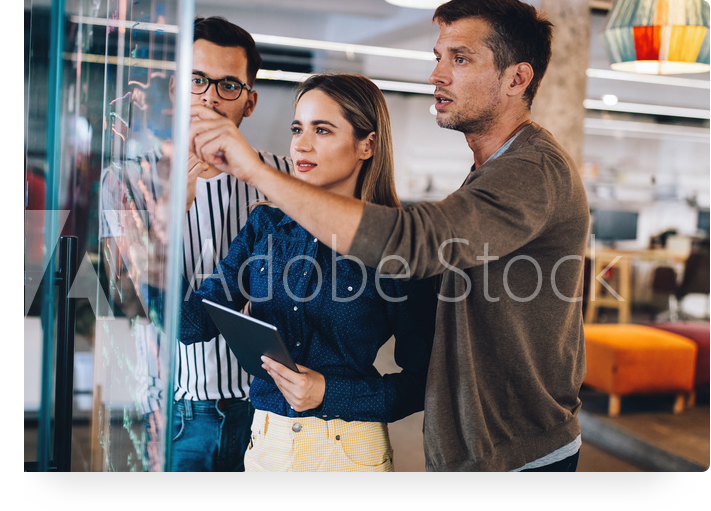INNOVATION
Emerging Tech: Terminology & Acronym Guide
INNOVATION
Emerging Tech: Terminology & Acronym Guide


It can be a daunting task to keep up with the ever-growing list of acronyms and trending buzz words in the technology space. With the more rapid and widespread adoption of spatial computing and mixed reality technologies, we thought it would be helpful to dive into what they mean and how they differ from each other.

Types of Experiences
AR – Augmented Reality – Digital objects within your real-world setting
XR – Extended Reality – Less often used term for AR
VR – Virtual Reality – Fully Immersive experience where you see none of the real-world
MR – Mixed Reality – The encompassing spectrum related to AR/VR/XR
Marker-Based – Within the real-world a QR code or some other real-world marker, or point of reference, is needed
Non Marker-Based – No real-world marker is needed
Windowed AR – Using AR via a Smart Device
Immersive AR – Using AR via a Headset / Wearable
Room Scale – An experience the size of the room
Table Top – An Experience that is the size of a…table top
Global Terms
Spatial Computing – An umbrella term for the more immersive kind of digital experiences within the digital world, it is the engine that drives the core of the experiences, input and output of data from both the processing unit to the users’ vision
API – Application Programming Interface – A computing interface that encompasses interactions between various software intermediaries
CDN – Content Delivery Network
Wearable – Something that a user will wear
Tethered – A device that needs to be connected to another unit and or power source
FOV – Field of View – How much a user can see
Hologram – Interactive 3D object that appears in front of the user
Light Field – The ability to capture the depth of a space
Spatial Mesh – The visual representation output of a light field that can be seen by the user/computer system
Digital Twin – Creating a 3D Model replica of a space or object
SDK – Software Development Kit
Eye Tracking – Tracking of eye movement on a headset
Hand Tracking – Tracking of the hands via a headset
Controller – Device held to interact with objects
TPU – Tensor Processing Unit – Processing AI-based information such as photos or video
A.I. – Artificial Intelligence
Machine Learning – Teaching a computer to learn a task
Visual Search – Uploading photos and finding similar photos
Voice SEO – Conversation Based experience that provides value to business/user
Coding Languages
WebXR – An API that allows developers to create XR experiences
React360 – Coding framework for the creation of interactive 360 experiences that run in your web browser
WebGL – JavaScript API for rendering interactive 2D and 3D graphics
Unity3D – Unity is a cross-platform game engine used to create AR Experiences
3D Object / Viewers
OBJ – 3D File Format
GlTF – 3D File Format
USDZ – 3D File Format
STL – 3D File Format
Model Viewer – Google’s 3D viewer for Web pages
Unity to WebGL – The process to move unity experiences to Web Pages
Cloud Storage Options
AWS S3 – Amazon Storage
GCP Cloud Bucket – Google Storage
Azure Blob Storage – Microsoft Storage
DigitalOcean Spaces – 3D Party Storage
AR Content Delivery Networks
AWS Cloudfront – Amazon
GCP Cloud CDN – Google
Azure CDN – Microsoft
DigitalOcean CDN – 3D Party
Hardware
Magic Leap 1 – Augmented Reality Headset from Magic Leap
Holo Lens – Augmented Reality Headset from Microsoft
Oculus Rift – Virtual Reality Headset from Oculus/Facebook
Oculus Quest – Virtual Reality Headset from Oculus/Facebook
Oculus Go – Virtual Reality Headset from Oculus/Facebook
HTC Vive – Virtual Reality Headset from HTC
Want even more educational content?
Subscribe below to get timely content delivered to your inbox,
or fill out the form below to speak to a Peakster about your next project.

DIGITAL MARKETING
Top 10 Photos of Developers Staring At Screens

DIGITAL STRATEGY
5 Ways Retailers Can Make Influencer Marketing More Influential

ECOMMERCE